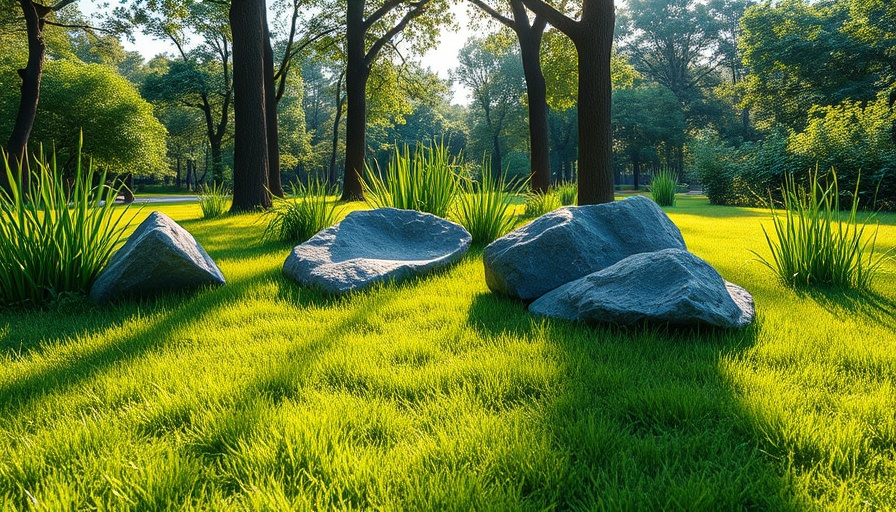
Discover the Benefits of Australian Astroturf for Your Garden
If you think the term "astroturf" only refers to synthetic grass, think again! Enter Australian Astroturf, or Scleranthus biflorus—a charming, real plant that adds a plush, inviting touch to gardens while being environmentally friendly. Embracing this resilient ground cover can revolutionize how you perceive landscaping, providing a guilt-free alternative to more water-intensive options.
A Unique Landscape Solution
This evergreen wonder, also known as lime lava or cushion bush, hails from Australia's lush coastal and alpine areas. Its dense, spongy foliage forms a lovely visual carpet that has the double benefit of resisting drought and reducing maintenance. Unlike traditional grass, Australian Astroturf thrives on minimal water and prefers quick-draining soil. If you live in coastal regions or areas with rocky outcroppings, this plant could turn your garden into an oasis of greenery with minimal effort!
How to Cultivate This Hardy Ground Cover
Growing Australian Astroturf is straightforward and rewarding. The plant should ideally be placed 1 inch apart in well-draining soil, allowing it to sprout and spread, creating a dense cover. Not just for cottage gardens, this delightful plant works well in rock gardens, patio edges, or even bonsai arrangements. Its deer-resistant nature makes it a perfect choice for those looking to add texture without the worry of wildlife browsing.
Positioning and Care for Optimal Growth
To ensure thriving growth, gardeners should mimic the plant's natural habitat. Australian Astroturf flourishes in environments that simulate its native rocky landscapes, experiencing moderate ocean breezes. It does best in warmer climates but is hardy down to 20°F. For those in regions with frost, consider growing this delightful ground cover in pots or protected areas during winter months.
Transforming Outdoor Spaces
When planning your landscape, consider planting Australian Astroturf alongside bold succulents like agaves or nestled beside rocks for a natural look. The charming foliage softens the hard lines of patios and adds a neat finishing touch without overwhelming adjacent plants. Experts suggest planting several to create a striking carpet effect or using them as accent pieces in outdoor designs.
Why Choose Australian Astroturf?
Among the myriad reasons to adorn your garden with Australian Astroturf, its aesthetic appeal, minimal water needs, and resilience stand out. This environmentally friendly option not only enhances the beauty of your outdoors but also encourages sustainable practices among homeowners, making it a stellar choice for conscious gardeners.
Planting Propagation Insights
A pro tip for amateur gardeners: when dividing the plant for propagation, ensure each clump boasts a healthy root system for optimal growth. Additionally, sustainability-minded homeowners will appreciate the plant’s potential for being a self-sustaining ground cover that necessitates little upkeep while providing year-round beauty.
Conclusion: Elevate Your Garden with Australian Astroturf
With water concerns becoming increasingly prominent, choosing ground covers like Australian Astroturf offers a sustainable and visually stunning solution for modern gardeners. By incorporating this charming plant into your landscape, you're not just enhancing your outdoor aesthetic—you're actively participating in sustainable gardening practices. So why wait? Start your journey towards a lush, green garden today!
 Add Row
Add Row  Add
Add 




Write A Comment